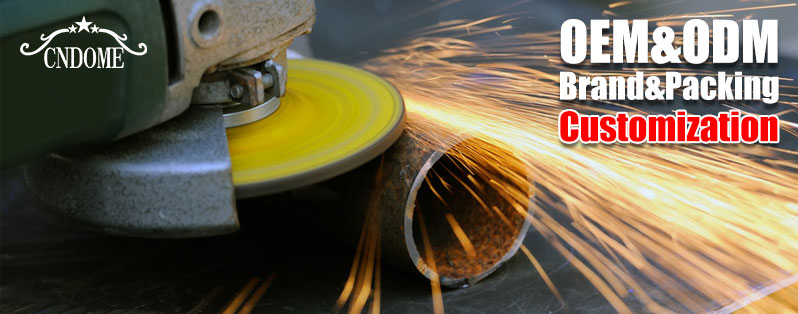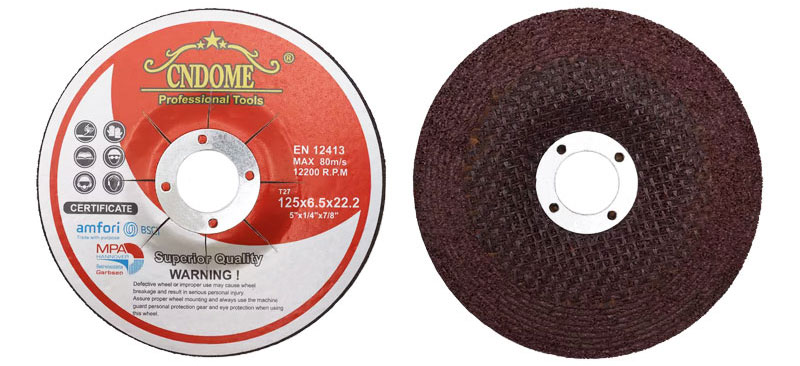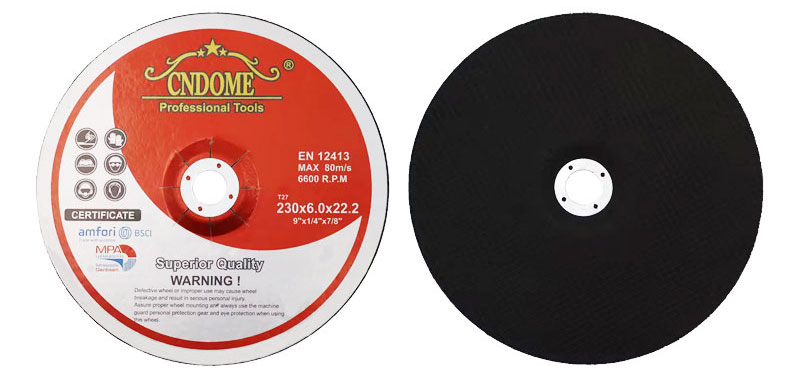Grinding wheels are essential tools in many industrial applications, and among the various types, Type 27 grinding wheels are particularly popular for their versatility and performance. Whether you’re working with metal, concrete, or other hard materials, a Type 27 grinding wheel can help you achieve optimal results. In this blog, we’ll explore the key aspects of Type 27 grinding wheels, including their construction, common uses, and advantages.
What is a Type 27 Grinding Wheel?
Type 27 grinding wheels are flat, depressed center wheels designed for grinding, blending, and finishing on a variety of materials. The term “depressed center” refers to the recessed shape of the wheel, which allows for greater clearance and better contact with the surface being worked on. This shape enables the wheel to be used for more aggressive grinding and is especially useful when working in tight spaces.
Common specifications for Type 27 grinding wheels:
- Shape: Flat with a recessed or depressed center
- Size: Available in various diameters, typically from 4 to 9 inches
- Material: Made from abrasive materials such as aluminum oxide, silicon carbide, or zirconia
- Arbor Hole: Usually comes with a 7/8-inch arbor hole for easy attachment to grinders
Key Applications of Type 27 Grinding Wheels
Type 27 grinding wheels are versatile and can be used in various industries for a wide range of tasks. Here are some common applications:
- Metal Grinding
Type 27 wheels are commonly used for grinding ferrous metals such as steel, stainless steel, and cast iron. They are ideal for smoothing rough edges, deburring, and removing welds. - Surface Finishing
These wheels are excellent for achieving a smooth, consistent surface finish on metal parts. They are frequently used in automotive, aerospace, and manufacturing industries where surface quality is critical. - Masonry and Concrete Grinding
Type 27 wheels can also be used for grinding and shaping materials like concrete, stone, and brick. They help in smoothing rough surfaces, removing old paint or coatings, and grinding down joints and edges. - Weld Preparation and Removal
When it comes to preparing and cleaning welds, Type 27 grinding wheels are indispensable. They can efficiently remove slag, spatter, and other imperfections that may arise during welding. - Deburring and Edge Grinding
Type 27 wheels are commonly used for deburring sharp edges on metal components. The flat design helps maintain contact with the material to remove burrs, sharp edges, and excess material quickly and evenly.
Advantages of Type 27 Grinding Wheels
- Increased Safety and Control
The depressed center design allows operators to have better control over the tool while grinding, reducing the likelihood of slipping or losing precision during operation. - Improved Durability
Type 27 grinding wheels are made from high-quality abrasives that ensure long-lasting performance. These wheels are designed to withstand the demands of heavy-duty grinding tasks without quickly wearing out. - Versatility
One of the biggest advantages of Type 27 grinding wheels is their ability to handle a wide range of materials. Whether you’re grinding metal, concrete, or stone, these wheels are up to the task. - Faster Material Removal
Due to their design and abrasive material composition, Type 27 wheels can remove material faster compared to other types, making them highly efficient for large-scale grinding jobs. - Convenient and Easy to Use
With their flat shape and recessed center, Type 27 wheels allow users to work in tighter spaces while still maintaining a high level of control and efficiency. This feature makes them a popular choice for industrial applications that require precision.
Choosing the Right Type 27 Grinding Wheel
When selecting a Type 27 grinding wheel, it’s important to consider the following factors:
- Material Type: Choose a wheel that is suitable for the material you’re grinding (e.g., aluminum oxide for steel, silicon carbide for concrete).
- Abrasive Size: The grit size determines the aggressiveness and smoothness of the wheel. Coarser grits are best for aggressive material removal, while finer grits are used for smooth finishing.
- Bond Type: The bond material affects the wheel’s hardness and durability. Hard bonds work well for heavy grinding tasks, while softer bonds are better for lighter tasks.
Conclusion
Type 27 grinding wheels are indispensable tools in the industrial and construction sectors. Their versatility, efficiency, and safety features make them an essential choice for professionals working with metal, concrete, and other materials. Whether you’re deburring, surface grinding, or prepping welds, Type 27 grinding wheels can help you achieve superior results with ease.
If you’re looking for a reliable and high-performance grinding wheel, consider the Type 27 for your next project. Be sure to select the right wheel for your material and application to get the best results!



